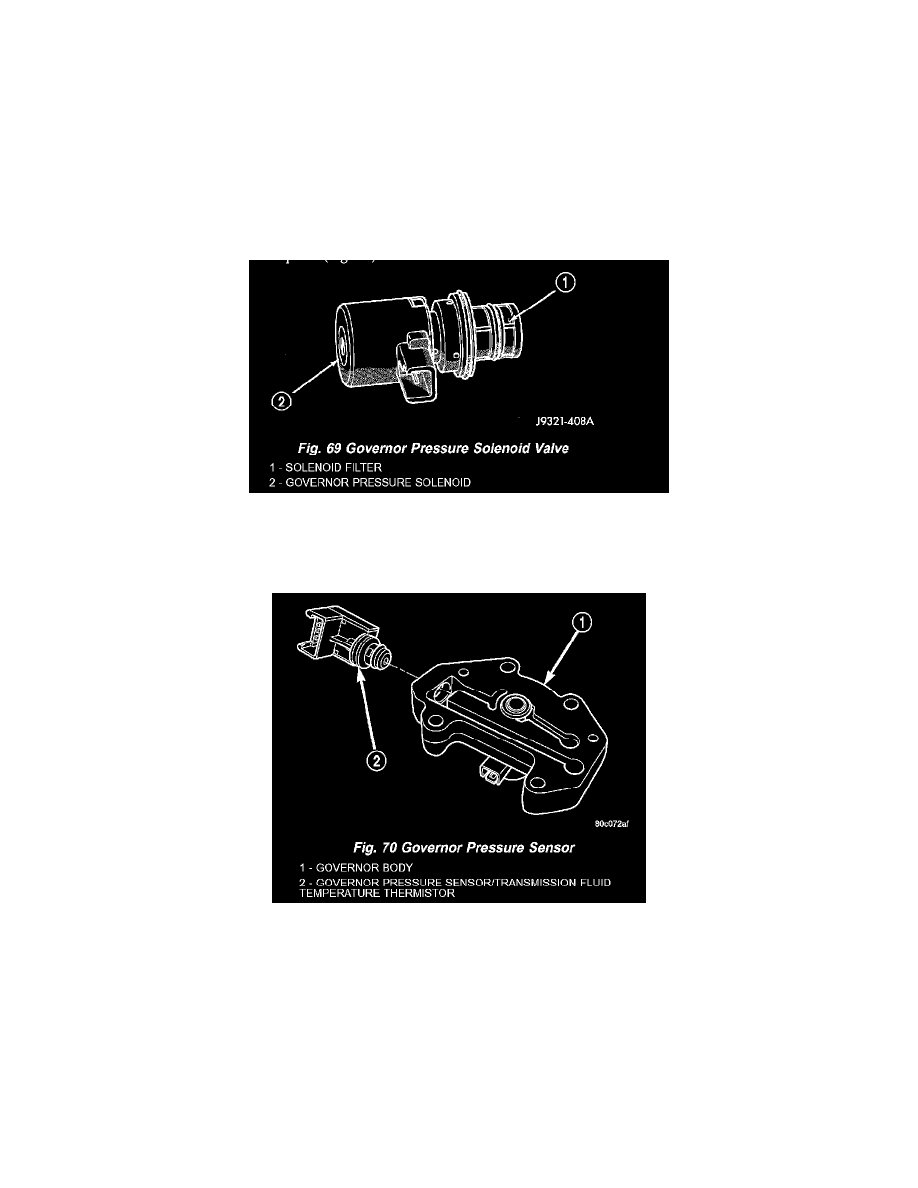RAM 2500 Truck 2WD L6-5.9L DSL Turbo VIN C (2002)

Governor: Description and Operation
47RE - Automatic Transmission
ELECTRONIC GOVERNOR
DESCRIPTION
Governor pressure is controlled electronically. Components used for governor pressure control include:
-
Governor body
-
Valve body transfer plate
-
Governor pressure solenoid valve Governor pressure sensor
-
Fluid temperature thermistor Throttle position sensor (TPS) Transmission speed sensor
-
Powertrain control module (PCM)
GOVERNOR PRESSURE SOLENOID VALVE
The solenoid valve is a duty-cycle solenoid, which regulates the governor pressure needed for upshifts and downshifts. It is an electro-hydraulic device
located in the governor body on the valve body transfer plate (Fig. 69).
GOVERNOR PRESSURE SENSOR
The governor pressure sensor measures output pressure of the governor pressure solenoid valve (Fig. 70).
GOVERNOR BODY AND TRANSFER PLATE
The transfer plate is designed to supply transmission line pressure to the governor pressure solenoid valve and to return governor pressure.
The governor pressure solenoid valve is mounted in the governor body. The body is bolted to the lower side of the transfer plate (Fig. 70).
GOVERNOR PRESSURE CURVES
There are four governor pressure curves programmed into the transmission control module. The different curves allow the control module to adjust
governor pressure for varying conditions. One curve is used for operation when fluid temperature is at, or below, -1°C (30°F). A second curve is used
when fluid temperature is at, or above, 10°C (50°F) during normal city or highway driving. A third curve is used during wide-open throttle operation.
The fourth curve is used when driving with the transfer case in low range.
OPERATION
